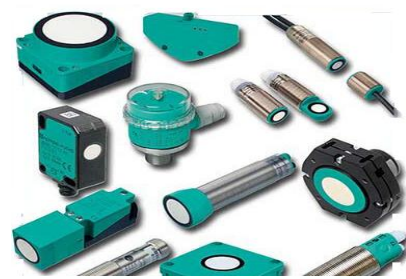What are the common detection methods and principles of ultrasonic sensors?
In industry, the typical applications of ultrasonic are nondestructive testing of metals and ultrasonic thickness measurement. In the past, many technologies have been hindered by the inability to detect the inside of object tissues. The advent of ultrasonic sensing technology has changed this situation. Of course, more ultrasonic sensors are fixedly installed on different devices and detect the signals that people need "quietly." In the future application of ultrasonic sensors, ultrasonic will be combined with information technology and new material technology, and more intelligent and high-sensitivity ultrasonic sensors will appear.

First, according to the characteristics of the volume, material, and whether it can be moved
Ultrasonic sensors use different detection methods. There are four common detection methods:
1. Penetrating: The transmitter and receiver are located on both sides. When the detected object passes between them, the detection is performed according to the attenuation (or occlusion) of the ultrasonic wave.
2. Retro-reflective: The transmitter and receiver are located on the same side, and the detection object (planar object) is used as the reflection surface, and the detection is performed according to the attenuation of the reflected wave.
3. Limited range type: The transmitter and receiver are located at the center of the limited range, the reflection plate is located at the edge of the limited range, and the reflected wave attenuation value when it is not blocked by the detected object is used as the reference value. When the detected object passes within the limited range, the detection is performed according to the attenuation of the reflected wave (compare the attenuation value with the reference value).
4. Limited distance type: The transmitter and receiver are located on the same side. When a detected object passes within the limited distance, the detection is performed based on the reflected ultrasound.
Second, the test is good or bad
The direct test of the ultrasonic sensor with a multimeter has nothing to reflect. If you want to test the quality of the ultrasonic sensor, you can build an audio oscillation circuit. When C1 is 390OμF, an audio signal of about 1.9kHz can be generated between the feet and feet of the inverter. Connect the ultrasonic sensor (transmitting and receiving) to be tested between the lame foot and the lame foot; if the sensor can produce audio sound, it can basically be determined that it is better than the ultrasonic sensor.
Note: When C1 = 3900μF, it is about 1.9kHZ; when C1 = 0.O1μF, it is about 0.76kHZ.
Third, the liquid level test
The basic principle of ultrasonic measurement of liquid level is: the ultrasonic pulse signal sent by the ultrasonic probe propagates in the gas, is reflected after encountering the air-liquid interface, and receives the echo signal to calculate the ultrasonic propagation time. Convert the distance or level. The ultrasonic measurement method has many unparalleled advantages:
(1) Without any mechanical transmission parts and contact with the liquid to be measured, it is a non-contact measurement. It is not afraid of electromagnetic interference and strong corrosive liquids such as acid and alkali, so it has stable performance, high reliability and long life.
(2) Its short response time can facilitate real-time measurement without lag.
The working frequency of the ultrasonic sensor used by the system is about 40kHz. The ultrasonic pulse is transmitted by the transmitting sensor, and is transmitted to the liquid surface and then reflected back to the receiving sensor. The time required for the ultrasonic pulse to be transmitted and received is measured. According to the speed of sound in the medium, the distance from the sensor to the liquid surface can be obtained To determine the liquid level. Considering the influence of ambient temperature on the propagation speed of ultrasonic waves, the propagation speed is corrected by a temperature compensation method to improve the measurement accuracy. The calculation formula is:
V = 331.5 + 0.607T (1)
In the formula: V is the propagation speed of ultrasonic waves in the air; T is the ambient temperature.
S = V × t / 2 = V × (t1-t0) / 2 (2)
In the formula: S is the measured distance; t is the time difference between transmitting the ultrasonic pulse and receiving its echo; t1 is the receiving time of the ultrasonic echo; t0 is the transmitting time of the ultrasonic pulse. Using the MCU's capture function can easily measure time t0 and time t1. According to the above formula, the measured distance S can be obtained by software programming. Because the MCU of this system uses a mixed-signal processor with SOC characteristics and a temperature sensor is integrated inside it, the temperature compensation for the sensor can be easily implemented using software.
If you want to know more, our website has product specifications for the ultrasonic sensors。 you can go to ALLICDATA ELECTRONICS LIMITED to get more information

